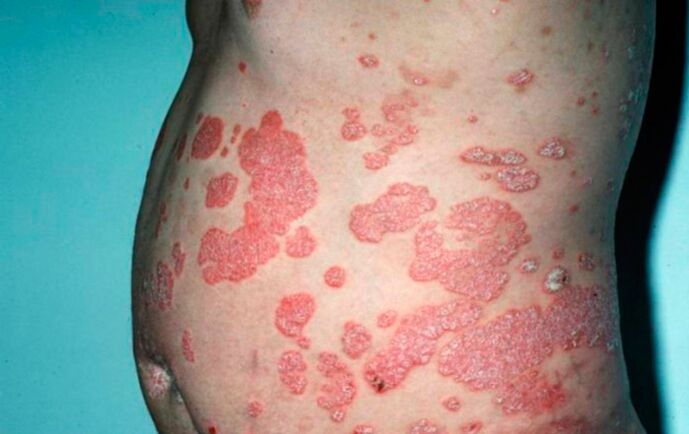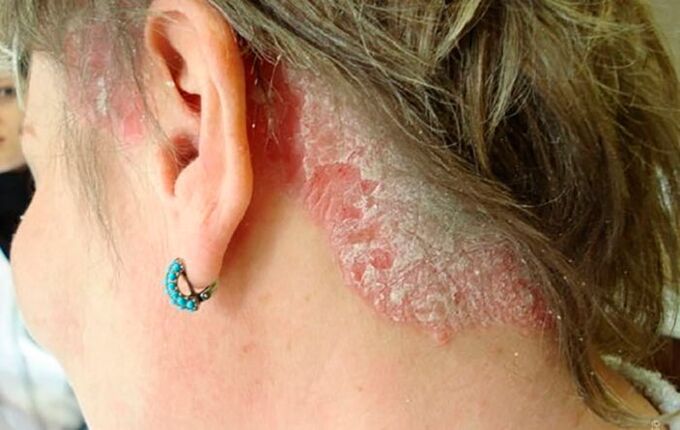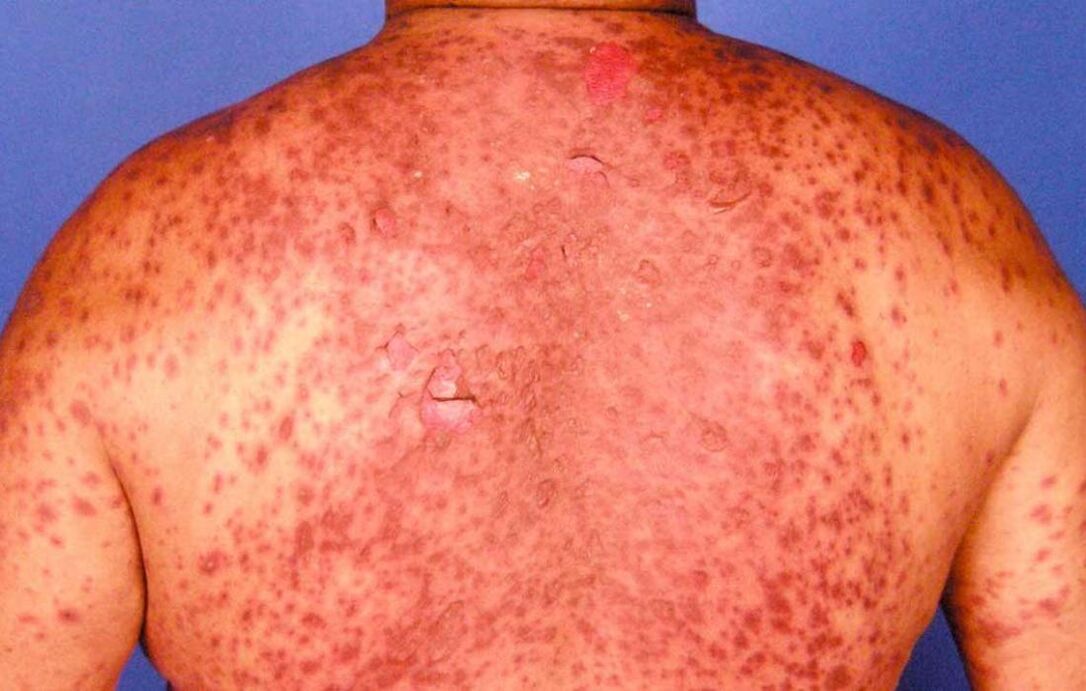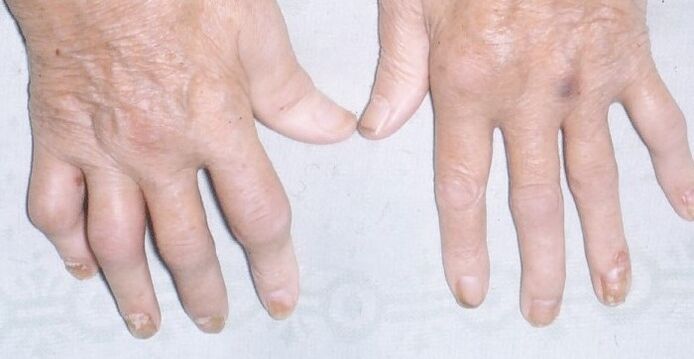
Psoriasis is a long-term and virtually incurable, non-communicable disease. It mainly affects the skin, nails and joints. Psoriasis can occur at any age, even in children.
There are several theories about the causes of psoriasis:
- Theory of neurogenic disorders;
- Theory of endocrine system problems;
- Theory of viral disorders or the theory of metabolic disorders.
But none of these theories has been proven practically scientifically. To date, scientists have concluded that the development of the disease is influenced by hereditary or human genetic predisposition to pathological changes in skin cells.
These cells form in the basal layer and, when they reach the outer stratum corneum, form scales. The genetic factor proves the presence of the disease in relatives. In other words, if your relatives suffer from psoriasis, it may appear in you or your children.
Factors influencing the onset of psoriasis
The following factors affect the appearance of psoriasis:
- Nervous system collapses;
- Mental and physical shock, overload of the body;
- Diseases of the endocrine system;
- Biochemical and enzymatic disorders;
- Hypothermia of the body;
- Decreased immunity.
It is difficult to identify and confirm what caused this disease. It is often said that the disease appeared for no apparent reason.
What is the disease of psoriasis: how does it manifest itself?
With this disease, papules and plaques appear on the skin. Plaques are sharply limited, compressed patches on the skin with small light scales of a pink or reddish tinge. Plaques have different shapes, but are more often round or oval. They can be located anywhere on the human body, but are more common on the large joints, the sacrum, and the lower back, under the hair on the head.
Psoriatic papules are characterized by rapid growth, with the formation of several centimeter plaques, which then merge into large skin lesions.
How is psoriasis diagnosed?
The following indicators are important for diagnosis:
- If you try to scrape off the papules, the scales will easily sprinkle, forming a "stearinfol".
- A reddish glossy surface appears on the skin - the terminal film of the stain;
- If you continue to scrape off the stain, punctate bleeding will appear on its surface - "dew".
Stages of psoriasis
The disease is characterized by the following stages of development:
- Progressive stage (appearance of small papules that grow over time and merge into larger ones);
- Stationary stage (plaques grow and do not change for some time);
- Regression stage (the rash becomes pale, thins and disappears from the surface of the skin).
Depending on the condition of the body, the disease can last for a very long time.
In the first stage of the rash, the Kebner effect is typical: after a week, more lesions from the psoriasis appear at the site of the damaged skin.
During remission, so-called "obligatory" plaques may remain on the skin in the area of the elbows or knees.
Types of psoriasis
There are several types of the disease:
- Exudative form: this expresses the puffiness and brightness of the papules with a yellowish crust on their surface;
- Follicular shape: small papules localize in the area of follicular openings;
- The palmar-plantar form of psoriasis: it is covered with cracks and scales on the skin of the sole and palm, with psoriasis plaques on them;
- Seborrheic psoriasis: localized primarily on the scalp;
- Psoriatic erythroderma. In this form, the disease is very severe, the entire surface of the skin is affected by psoriasis, peripheral lymph nodes are enlarged, fever, itching, sleep disturbances occur, blood and urine changes are observed;
- Arthropathic psoriasis: affects and deforms the joints, restricts movement within them. It is characterized by severe pain and swelling in the affected joint area. This is a very painful form of psoriasis that often results in disability.



In all forms of psoriasis, nail lesions can be observed: they become cloudy, thicken, and show small spots as if they were pierced with a needle.
The disease lasts for many years, with periods of deterioration and improvement in health, characterized by seasonality: it worsens in the cold, remission in the warm season.
Psoriasis treatment
Treatment of psoriasis should be performed under the supervision of a physician in the dermatology department. Treatment is prescribed to optimally combine therapeutic drugs with ointments and physiotherapy, and to limit animal fats and carbohydrates in foods, alcohol, and spicy foods.
Patients should be under medical supervision and need annual spa treatment. Visiting the radon sources and hydrogen sulfide baths recommended for psoriasis, swimming in the sea, sunbathing.























